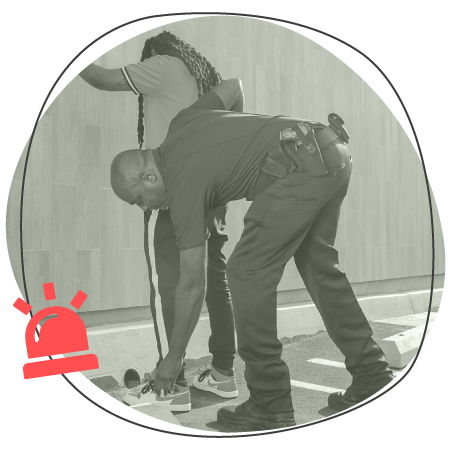

Look at the following illustration and analyze the sentences that are included in it.
What kind of phrases are used in the images? Is their meaning the same? If you want to know more about the differences between these two structures, continue reading.
Pronouns are words used to replace names of people, animals, places or things. On the other hand, the term reciprocal indicates a mutual relationship between two things. Now that you know this, pay attention to the following concept.

There are only two reciprocal pronouns: Each other and one another.
When using reciprocal pronouns, you don't have to express the same idea more than once, so they are really helpful in avoiding unnecessary repetitions. Analyze the following structure.
In the following examples, you will find sentences missing reciprocal pronouns. Read the sentences carefully and place the correct reciprocal pronoun that best completes each sentence.
Take a look at some examples.
Be careful!
Below you will find examples where two or more people participate in a reciprocal action.
Now is the time to practice using reciprocal pronouns in a normal conversation. Read Sofia’s story, she went to a café with her mom, and they overheard a conversation. Complete the story using each other and one another. Don’t forget to read carefully the given information to use the best reciprocal pronoun for each case.
These two verbs are translated into Spanish as hacer but are used in different contexts. Telling these terms apart can be difficult in some cases, so you need to pay close attention to their specific functions. Analyze the first verb.
Check out some examples of each function.
Now, take a look at the second verb:
Check out some examples of each function.
Now is the time to practice “do and make” for different contexts. Read the sentences and complete them using do or make, depending on the situation. Don’t forget to consider which verb corresponds to that particular case carefully.
If you want to learn more about the uses of make and do, analyze carefully the following information.
Do and make are also part of fixed expressions that cannot be altered.
Now it’s time to practice your speaking skills by using make and do.
Instructions: Click on the recording icon, then read the sentences below. Check your score at the end.
This grammatical structure is only employed in singular form, pay attention to its characteristics.
Causative form It is used to talk about an action that someone else did for another person. The subject of the sentence does not perform such activity but is the one requesting it to be done.
The causative form doesn't have an equivalent in Spanish, so if you try to construct sentences in your native language following this pattern, they will not make sense. However, this structure is completely correct in English, and it is used very frequently.
Observe the differences among the following sentences.
In the last example, it wasn't mentioned who fixed the car, but it can be specified using the word by.
I had my car fixed by the mechanic.
In the previous sentence, the main focus is the action that was carried out instead of the person who did it.
The causative form is mainly used with the verbs have and get. In order to talk about services or actions that involve payment, you have to follow this structure:
The next examples follow the previous pattern:
The next structure allows you to specify who did the action requested. In this case, the focus is the person and not the activity performed.
Check out the examples below.
Get is less formal than have, but both verbs follow the same pattern:
Observe the following sentence.
 I'm getting internet installed today
I'm getting internet installed today
When using get, you can also specify who performed the action requested, just follow the next pattern:
Analyze these examples.
The causative form can also be used to express that something not requested took place. This sort of actions tend to be unpleasant and unexpected. To communicate this type of ideas, you need to follow the next structure:
Here is an example:
 He had his car stolen last Friday, but yesterday they got the thief.
He had his car stolen last Friday, but yesterday they got the thief.
The previous example describes an unwanted action, but it is expressed with the causative form because someone different from the person communicating the idea performed such action.
Read the advertisement. They are offering some interesting services at Leave it to me!
After reading the advertisement at Leave it to me! Check the following statements and decide whether they are True or False. Then check your answers by clicking on the button.
As mentioned before, have and get are the main verbs used in the causative form, but there are other words to choose from. For example:
Let’s practice causative verbs in context. Listen to Sarah, she is taking with her friend Helen about her husband.
Inside this audio, there were some examples of causative verbs. Did you notice them? Play the track one more time and write all causative verbs you can find. Then check your answers by clicking on the button.
The causative form may sound weird in Spanish, but it is a fundamental part of English. To get used to it, try to avoid translating it literally and instead focus on memorizing its structure.
To conclude this lesson, let’s double-check today’s topic.
Reciprocal pronounsare words that express an action that was done by two or more people, animals, or objects. All the subjects involved receive the effects of such action at the same time.There are only two reciprocal pronouns: Each other refers to two people. One another involves two or more people.
The causative form is used to talk about an action that someone else did for another person. The subject of the sentence does not perform such activity but is the one requesting it to be done.
Instructions: Think about what people do every day and write five sentences using the causative form to describe their activities. You can use any of the verbs you already know.